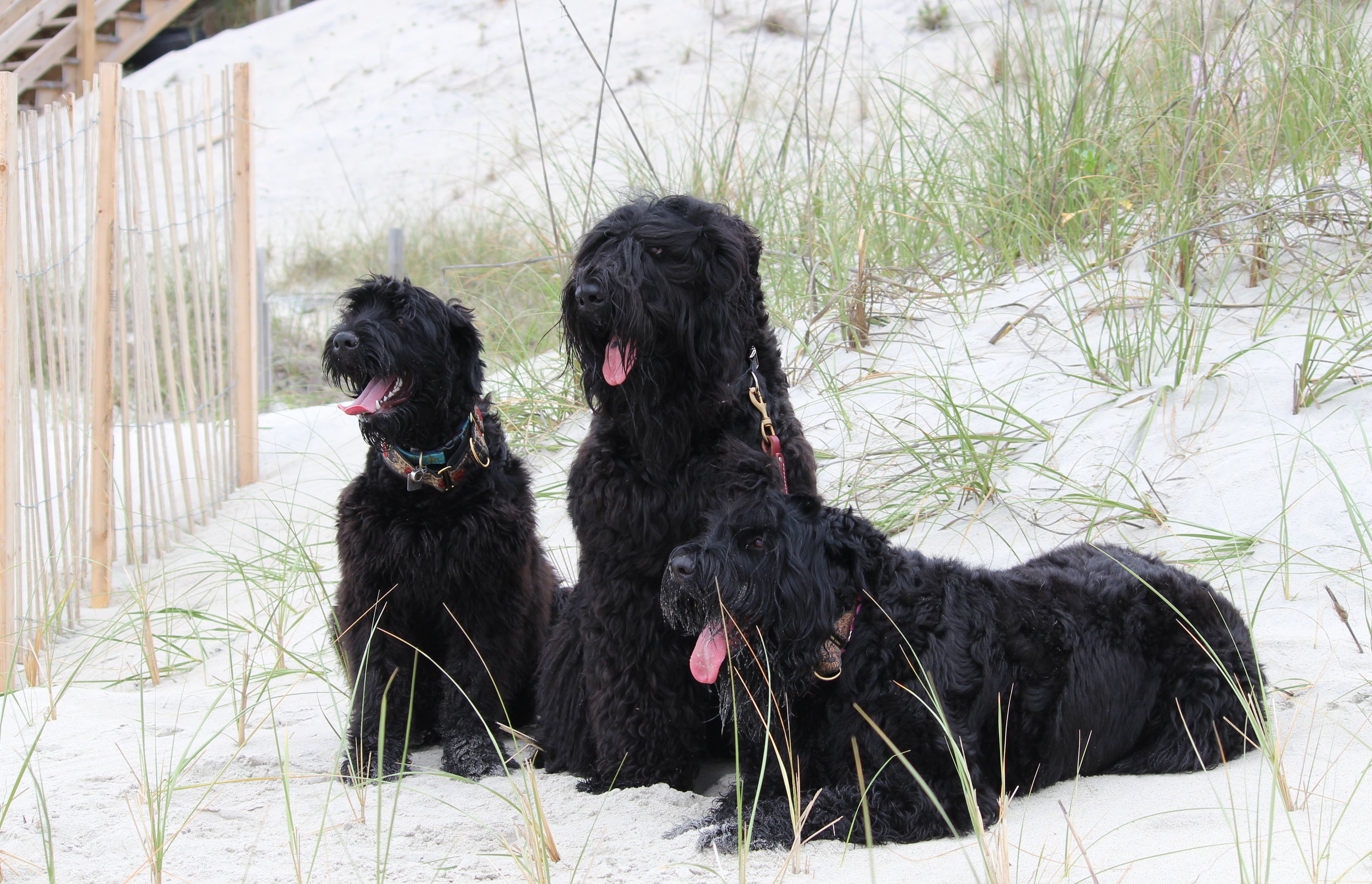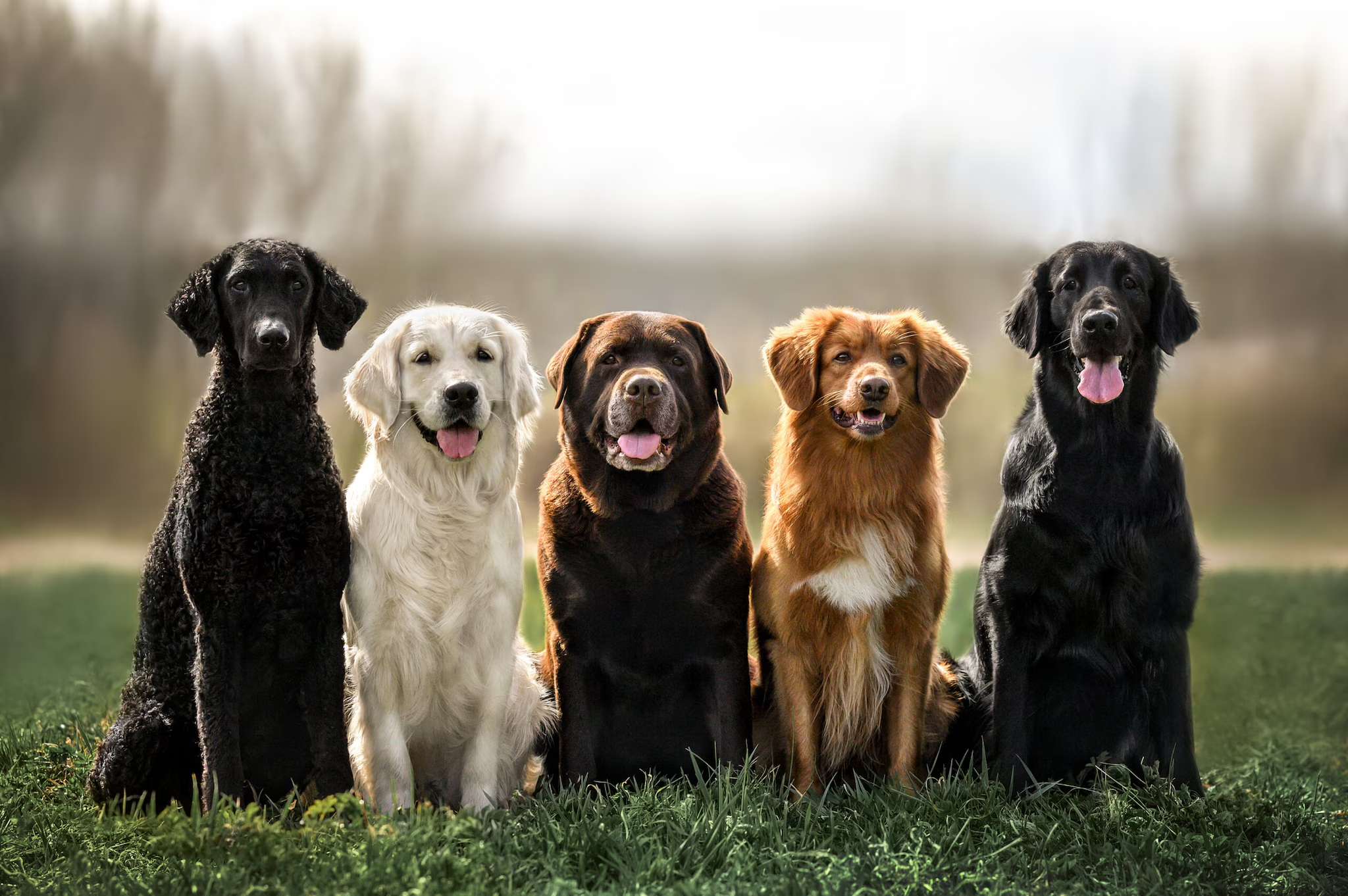The majestic Black Russian Terrier, a breed renowned for its intelligence, courage, and imposing presence, is generally considered robust and healthy. Developed in Soviet kennels as a military dog, the “Blackie” boasts a strong constitution. However, like all purebred dogs, the Black Russian Terrier is predisposed to certain inherited health conditions. Understanding these potential issues and the importance of health testing is paramount for prospective owners and responsible breeders alike. This comprehensive guide delves into the essential health tests recommended for Black Russian Terriers, shedding light on why they matter and what they entail.
The Importance of Health Testing
Health testing plays a crucial role in ensuring the well-being of the Black Russian Terrier breed. For potential owners, knowing that a breeder conducts thorough health screenings provides peace of mind that their future companion is less likely to suffer from preventable genetic diseases. It allows them to make informed decisions and be prepared for potential health challenges down the line.
For breeders, health testing is an ethical responsibility. By screening their breeding stock for inherited conditions, they can make informed decisions about which dogs to breed, aiming to reduce the incidence of these diseases in future generations. This commitment to responsible breeding practices contributes to the overall health and longevity of the breed. Furthermore, transparency regarding health testing builds trust between breeders and potential owners.
Orthopedic Evaluations: Laying a Strong Foundation
Given their size and powerful build, Black Russian Terriers can be susceptible to orthopedic issues. Comprehensive evaluation of their skeletal system is crucial.
Hip Dysplasia: Ensuring Mobility and Comfort
Hip dysplasia, a malformation of the hip joint, is a significant concern in many large breeds. In affected dogs, the femur (thigh bone) doesn’t fit snugly into the acetabulum (hip socket), leading to instability, pain, and eventually arthritis.
- OFA (Orthopedic Foundation for Animals) Radiograph: This standard screening method involves taking X-rays of the dog’s hips in a specific position, typically after the age of two when skeletal maturity is reached. Board-certified veterinary radiologists at the OFA evaluate these radiographs based on established criteria, assigning a grade ranging from excellent (normal) to severe dysplasia. Dogs with fair, borderline, or any level of dysplasia are generally not recommended for breeding.
- PennHIP (University of Pennsylvania Hip Improvement Program): PennHIP is another valuable method for assessing hip health. It involves taking three different radiographic views of the hips, allowing for a more quantitative measurement of hip laxity (looseness). The distraction index (DI), a key metric in PennHIP, measures the degree of passive laxity. A lower DI indicates tighter hips and a lower risk of developing dysplasia. Breeders often aim for a DI below 0.4 for their breeding stock. PennHIP can be performed on dogs as young as 16 weeks.
Elbow Dysplasia: Maintaining Forelimb Function
Elbow dysplasia encompasses several developmental abnormalities of the elbow joint, including fragmented coronoid process (FCP), osteochondritis dissecans (OCD), and ununited anconeal process (UAP). These conditions can lead to pain, lameness, and osteoarthritis.
- OFA Radiograph: Similar to hip dysplasia screening, OFA evaluates elbow radiographs taken in a specific flexed position. Elbows are graded as normal or affected, with affected elbows further classified from grade I (mild) to grade III (severe). Only dogs with normal elbow conformation should be considered for breeding.
Eye Examination: Preserving Vision
Ocular health is vital for the Black Russian Terrier. Regular and thorough eye examinations by a veterinary ophthalmologist are essential to identify any inherited eye conditions.
Ophthalmologist Evaluation: A Specialist’s Insight
A board-certified veterinary ophthalmologist has specialized training in diagnosing and treating eye diseases in animals. A comprehensive eye examination involves a thorough assessment of all structures of the eye, including the cornea, lens, retina, and optic nerve. This examination can detect various inherited conditions that may not be apparent during a routine veterinary check-up.
- Progressive Retinal Atrophy (PRA): This is a group of inherited diseases that cause the gradual degeneration of the retina, eventually leading to blindness. Different forms of PRA can have varying ages of onset. Regular ophthalmological exams are crucial for early detection.
- Cataracts: While cataracts can develop due to various factors, some forms are inherited. An ophthalmologist can identify congenital or early-onset cataracts that may be passed on to offspring.
- Other Ocular Conditions: The ophthalmologist will also screen for other potential inherited eye issues that may affect the breed.
The OFA offers an Eye Certification Registry (ECR) for dogs that have passed an ophthalmologist examination. For breeding dogs, annual eye examinations are often recommended due to the potential for late-onset conditions.
Cardiac Evaluation: A Healthy Heartbeat
Ensuring the cardiovascular health of Black Russian Terriers is another important aspect of responsible breeding.
Cardiac Exam: Listening for Potential Issues
A thorough cardiac examination typically involves auscultation, where a veterinarian listens to the dog’s heart with a stethoscope to detect any abnormal sounds such as murmurs or arrhythmias (irregular heartbeats). These sounds can indicate underlying heart conditions.
- Subaortic Stenosis (SAS): This is a congenital heart defect where there is a narrowing below the aortic valve, obstructing blood flow from the heart.
- Mitral Valve Disease (MVD): This degenerative condition affects the mitral valve, leading to leakage and potentially heart failure, particularly in older dogs.
- Other Congenital Heart Defects: The cardiac exam can also help identify other less common congenital heart abnormalities.
If any abnormalities are detected during auscultation, further diagnostic testing, such as an electrocardiogram (ECG) or echocardiogram (ultrasound of the heart), may be recommended by a veterinary cardiologist to determine the nature and severity of the heart condition.
Genetic Tests: Unlocking the Canine Code
Advancements in veterinary genetics have led to the development of DNA tests for specific inherited diseases. These tests can identify dogs that are affected, carriers, or clear of certain genetic mutations.
Juvenile Laryngeal Paralysis & Polyneuropathy (JLPP) DNA Test: A Critical Screening
JLPP is a devastating inherited neurological condition specific to the Black Russian Terrier breed. It is caused by a recessive gene mutation. Affected puppies typically develop symptoms between three and six months of age, including noisy breathing (due to laryngeal paralysis), vision problems, and progressive muscle weakness and incoordination (polyneuropathy). Sadly, there is no cure, and affected puppies often succumb to the disease or are euthanized for humane reasons.
The DNA test for JLPP is crucial for breeders. It can identify:
- Clear (N/N): The dog does not have the JLPP mutation and will not develop the disease or pass it on to its offspring.
- Carrier (N/JLPP): The dog has one copy of the JLPP mutation. It will not develop the disease but can pass the mutation on to its offspring if bred with another carrier or an affected dog.
- Affected (JLPP/JLPP): The dog has two copies of the JLPP mutation and will develop the disease.
Responsible breeders will only breed clear dogs or will carefully pair carriers with clear dogs to ensure that no affected puppies are produced.
Hyperuricosuria (HUU) DNA Test: Managing Urate Stones
Hyperuricosuria is another inherited condition in Black Russian Terriers characterized by elevated levels of uric acid in the urine. This can lead to the formation of urate bladder and kidney stones, causing pain, urinary obstruction, and potentially kidney damage. It is also an autosomal recessive condition.
The HUU DNA test identifies:
- Clear (N/N): The dog does not have the HUU mutation.
- Carrier (N/HUU): The dog has one copy of the HUU mutation and can pass it on.
- Affected (HUU/HUU): The dog has two copies of the HUU mutation and is at high risk of developing urate stones.
Knowing a dog’s HUU status allows breeders to make informed mating decisions to minimize the risk of producing affected puppies. Dietary management can also help manage the condition in affected dogs.
Dominant Black & Agouti DNA Tests (Color Testing): Understanding Coat Genetics
While not directly related to health, DNA tests for coat color genes (dominant black and agouti) can be valuable tools for breeders to understand the genetic basis of coat color in their lines.
Other Important Health Considerations
Beyond the core health tests, there are other health concerns that breeders and owners should be aware of.
Thyroid Evaluation: Checking Hormone Balance
Black Russian Terriers have a predisposition to hypothyroidism, a condition where the thyroid gland doesn’t produce enough thyroid hormone. This can lead to various symptoms, including lethargy, weight gain, hair loss, and skin problems. Annual blood tests to check thyroid hormone levels are recommended.
Urinary Tract Stone Evaluation: Monitoring Kidney Function
As mentioned with HUU, Black Russian Terriers have an increased risk of developing urinary tract stones. Regular urine analysis can help detect early signs of increased uric acid or other factors that may contribute to stone formation.
Genetic Diversity Testing: Maintaining a Healthy Gene Pool
Some laboratories offer genetic diversity testing, which analyzes a broad panel of genetic markers to assess the overall genetic variation within an individual dog and across the breed. Maintaining genetic diversity is important for the long-term health of the breed, as it reduces the risk of accumulating harmful recessive genes and can improve overall resilience to disease.
Recommendations for Owners and Breeders
For Potential Owners: When searching for a Black Russian Terrier puppy, prioritize breeders who are transparent about their health testing practices. Ask to see documentation of health clearances for the puppy’s parents from reputable organizations like the OFA and genetic testing laboratories. Be prepared to ask questions about the results and understand the implications.
For Breeders: Responsible breeding requires a commitment to comprehensive health testing. This includes orthopedic evaluations (hips and elbows), ophthalmologist examinations, cardiac evaluations, and relevant genetic tests (JLPP and HUU are crucial for this breed). Make health testing results publicly available through organizations like the OFA. Continuously educate yourself on the latest health concerns and testing options for the breed.
For All Owners: Regardless of the health testing done on a dog’s lineage, regular veterinary care is essential. Annual check-ups, vaccinations, and prompt attention to any signs of illness are crucial for maintaining the health and well-being of your Black Russian Terrier.
Conclusion: Investing in a Healthy Future
Health testing is an indispensable tool for ensuring the health and longevity of the Black Russian Terrier breed. By embracing responsible health testing practices, breeders can work towards reducing the incidence of inherited diseases, and potential owners can have greater confidence in the health of their future companions. Investing in health testing is an investment in the future of this magnificent breed, ensuring that Black Russian Terriers continue to thrive for generations to come.



